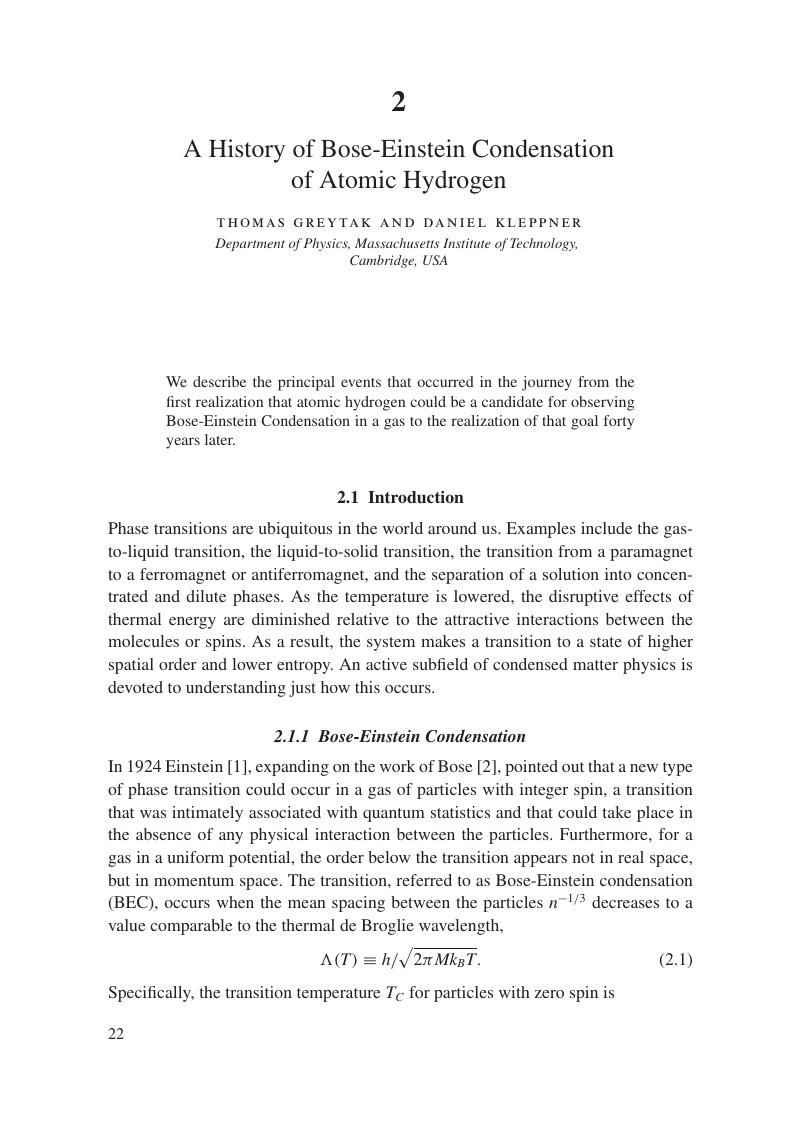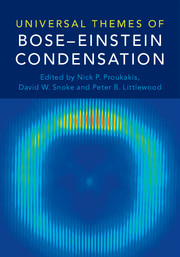Book contents
- Frontmatter
- Contents
- Foreword
- Preface
- Part I Introduction
- 1 Universality and Bose-Einstein Condensation: Perspectives on Recent Work
- 2 A History of Bose-Einstein Condensation of Atomic Hydrogen
- 3 Twenty Years of Atomic Quantum Gases: 1995-2015
- 4 Introduction to Polariton Condensation
- Part II General Topics
- Part III Condensates in Atomic Physics
- Part IV Condensates in Condensed Matter Physics
- Part V Condensates in Astrophysics and Cosmology
- Universal Bose-Einstein Condensation Workshop
- Contributors
- Index
- References
2 - A History of Bose-Einstein Condensation of Atomic Hydrogen
from Part I - Introduction
Published online by Cambridge University Press: 18 May 2017
- Frontmatter
- Contents
- Foreword
- Preface
- Part I Introduction
- 1 Universality and Bose-Einstein Condensation: Perspectives on Recent Work
- 2 A History of Bose-Einstein Condensation of Atomic Hydrogen
- 3 Twenty Years of Atomic Quantum Gases: 1995-2015
- 4 Introduction to Polariton Condensation
- Part II General Topics
- Part III Condensates in Atomic Physics
- Part IV Condensates in Condensed Matter Physics
- Part V Condensates in Astrophysics and Cosmology
- Universal Bose-Einstein Condensation Workshop
- Contributors
- Index
- References
Summary

- Type
- Chapter
- Information
- Universal Themes of Bose-Einstein Condensation , pp. 22 - 37Publisher: Cambridge University PressPrint publication year: 2017



